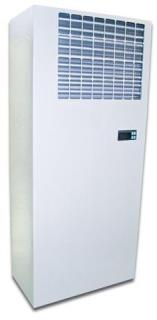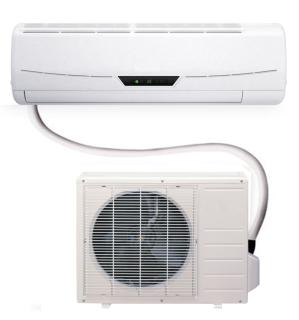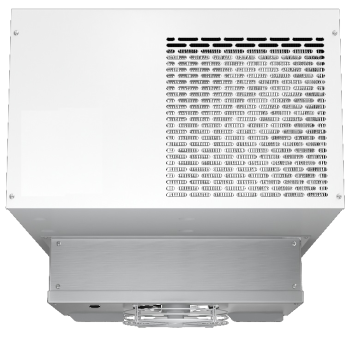There are special considerations in the storage and management of health products. Health supplies have specific characteristics which may increase their risk of damage (e.g. fragile, temperature sensitive, light sensitive, flammable), which may increase the risk to beneficiaries if not stored properly. Ensure warehouses selected can, in general:
Store medicines/medical supplies appropriately in line with manufacturer labelling. This may include:
- Keeping items away from direct sunlight.
- Regulating the humidity in the storage area.
- Maintaining proper temperature for different products.
- Storing medical supplies separately from chemicals or food (pesticides, fertilisers, cement, fuel included), and dangerous goods. This also applies when loading onto vehicles.
- Storing narcotics and high value items in a secure location, in line with national rules and regulation.
Practice proper basic inventory management and tracking, including:
- Storing items in rational manor (e.g. organised by type).
- Taking regular temperature checks of different storage areas.
- If stored on pallets, clearly labelling all cartons with their contents.
- Keeping proper records on bin cards and in inventory logs - always including batch numbers and expiry dates upon receipt and record batch references at all stock movements, including on all stock/bin cards and all warehouse ledgers.
- Using and understanding First Expire First Out principles (FEFO).
Manage safely expired and damaged products:
- Quarantining expired or damaged drugs until they can be safely destroyed.
- Keeping a record of drugs placed in quarantine on the relevant bin and stock cards.
- Having a process for expired/damaged items. These drugs/consumables should be destroyed safely in line with WHO and national government regulations.
A temperature-controlled storage area is any place in which the inside temperature is consistently maintained within a predefined temperature range.
Humanitarian working conditions often have limited or no temperature-controlled storage capacity, so the need for temperature-controlled conditions must be factored into operational plans when selecting and establishing storage. Any form of temperature-controlled space will require basic equipment – air-conditioners, refrigerators, freezers – and some form of power, most commonly electricity, generator, or solar based solutions. It is essential to look at specific packaging and labelling requirements of specific products and obtain this information ahead of receipt of goods.
The majority of health items with time-temperature sensitive conditions used in a humanitarian environment require storage between +15°C to +25°C. However, a critical component of the medical supply chain will require +2°C to +8°C storage, including lifesaving drugs, blood transfusion items and some vaccines. In special cases, including outbreaks of infectious diseases, or where specific medical interventions are planned, other temperature categories may be required.
Depending on the outside ambient temperature, it may be essential to specifically contract/modify storage spaces to have dedicated temperature zones within warehouses. Specific infrastructure, equipment and power solutions need to be considered in planning and the design of warehouses.
Temperature Zones
A “temperature zone” is any discrete area inside of a storage facility that has a measurable temperature different than other parts of the same warehouse or storage facility. Temperature zones are usually caused by warmer air rising to the top of a warehouse causing stratification, however temperature differences can also be caused by proximity to doors and windows, pipes or running equipment that may radiate heat.
Temperature stratification is the process of heat separating in an enclosed space – warmer air rises, and in larger facilities the temperature differential between the bottom shelf and a top shelf can be both noticeable, and cause damage if left untreated for a long time. Temperature stratification can be prevented by installing fans or air conditioners that are specifically designed to rotate air, or by intentionally limiting the height of storage for smaller facilities.
Humidity can also be a problem in some climates, and where required electrically powered dehumidifiers can also be installed. Logistics planners should note that primary packaging materials are chosen to protect the medicine from expected humidity in the climatic zone where the product is to be used, so requirements for controlling humidity may be dependent on product types and product sourcing.
For ranges above freezing, temperature is most efficiently controlled by a balanced combination of active and passive techniques. Depending on the climate, these are likely to include:
| Insulation |
|
|---|---|
| Self-Contained Room |
|
| Minimise Heat Gain/Loss |
|
| Passive Techniques |
|
| Prevent Temperature Stratification |
|
Active Cooling
Active cooling requires power for part of or all of the day, and whatever active cooling device is used must be adequate to accommodate the storage space. Choosing which type of active cooling system, and how many/the size of the unit(s) required will depend on a number of factors, among them the size of the space, the external ambient temperature and the ideal temperature range.
Some storage facilities will have properly installed or adequate temperature controls in place already, and active cooling can be achieved directly through a central control mechanism. In other instances, humanitarian organisations may need to install their own active cooling devices. Prior to installation of any unit, consult with a qualified installer so that they might understand both the size and the temperature requirements.
| Monobloc Air Conditioners | Self-contained air-conditioning units – monobloc are single units that put out cool air from one side, but radiate heat from the other. Monobloc conditioners may not be suitable for smaller cold rooms built inside of a larger warehouse space, as all heat waste would be discharged into the open warehouse. |
|---|

| Split Air Conditioners | Split air conditioners have two components that are separated, but connected by a long tube of freon coolant, and usually have a single power source. The advantage of spit air conditioners is that the heat output can be placed outside meaning it can be larger, noisier, and won’t impact indoor ambient temperatures. |
|---|

| Freezer Units | Freezer units are used for rooms that need to be near or below freezing temperatures. Freezer units are typically very large and need to be mounted on the roof of the storage area to maximise the flow of cold air. |
|---|

In actively cooled spaces, there are some special considerations:
- Floor insulation - Sometimes freezer rooms have insulated flooring as well. Insulated floors will help keep energy costs down as less heat is absorbed from the ground. Additionally, cold rooms can cause something called “frostheave” in which water in the ground under the storage site is frozen, causing the ground to shift and crack.
- Heat output – Regardless of the method, any form of active cooling will have some form of heat output. Spaces should be designed with heat being expelled outdoors wherever possible. Exhaust heat should also not endanger the health of workers or cause potential fire hazards.
- Energy needs – Active cooling always requires some form of power. Usually even medium sized spaces require more power than a solar electric system can provide.
- Duration – Not all active cooling systems need to be powered or cool the air at all times. The needs for part time cooling depend on the insulation value of the structure, the outside temperatures, the time of year, and the types of medicines stored. Before installing a system that will only have access to intermittent power, a proper heat mapping exercise should be conducted, and an assessment of the medical items should be finalised.
- Condensation – In the process of air conditioning, when hot air gets cooled as it passes through the evaporator coil - often in the indoor part of the refrigeration system - water condensation occurs, and water needs to be collected and exhausted in a controlled manner.
- Uneven distribution of cooled air - Depending on the refrigeration system, the load configuration and the chamber design and its performance, the air temperature is distributed unevenly and deviations from the Set Point in some spots may be larger than expected, putting at risk the stability of the goods stored/transported in it.
Note: active heating may be required in some instances. In storage areas that are prone to extreme cold, or when operating in climates with extreme cold, active heating may also be required in order to maintain the manufacturer specified temperature ranges. Many temperature control devices – such as air conditioners – also have heating functions built in. The important thing for active heating is that temperature ranges also do not exceed the required temperature ranges.
Renting Commercial or Third Party Managed Medical Storage
Whether humanitarian organisations are planning on moving relatively small quantities of health commodities, or maintain a large, dedicated health supply chains, they should consider using the commercial market wherever available.
Properly qualified commercial service providers have many advantages:
- They likely already have access to expensive or specialised equipment used for properly maintaining pharmaceuticals and other health items.
- They will have an understanding of the prevailing regulatory requirements for managing health items in the local context and should have proper certifications/authorisations to do so.
- Will have access to specially trained staff.
Prior to engaging with or renting a privately managed medical storage facility, there are some things that humanitarian organisations may want to consider.
- When submitting a request for quotation for potential service providers, humanitarian agencies should:
- Outline the types of commodities that will be stored in as much detail as possible. This will enable storage providers to more easily identify areas in which they may or may not have capacity to support the overall needs of the agency.
- Ask if private companies have the required national certifications to store health commodities / ask to see copies of registration/certification where required. This may include special authorisation to store controlled substances.
- Agencies should consider the total scope of needs required. Do they require:
- Reconditioning of passive cold chain boxes?
- Pick and pack / kitting?
- Re-palletisation/Labelling?
- Specialised inventory or reporting?
- Does the company provide disposal services for expired medical items?
Self-Managed Medical Storage
Humanitarian organisations are frequently faced with having to develop and manage their own storage facilities, often in locations with limited access to improved infrastructure. When identifying a self-managed storage facility, there are a few things to consider:
Stand Alone Medical Storage Locations
In addition to the traditional factors surrounding the selection of regular storage locations, medical storage locations may have additional or extra considerations. Medical facilities that require some form of temperature control benefit from:
- Proximity to health facilities – the closer medical storage locations are to the final distribution points, the less complicated the process transporting temperature-controlled items are.
- Proximity to manufacture or central medical stores – Upstream or distribution warehouses may want to be closer to facilities that produce medical items, or to national authorities that may supply or distribute medical items themselves.
- Persistent electricity – storage locations requiring temperature control that have access to regular and consistent grid power and have access to backup generators run a much lower risk of damage to stored items from gaps in power.
- Shading – The availability of partial or full shade over a storage facility can greatly reduce temperature fluctuations and reduce demand for electricity.
- Controlled access areas - The availability of locked cages, locked rooms or locked storage cabinets for high value and controlled substances can reduce risks of theft and ensure compliance with legal requirements.
Medical Storage Rooms in Mixed-Use Warehouses
In the absence of dedicated temperature-controlled storage spaces, humanitarian agencies can construct or utilise pre-existing self-contained temperature-controlled spaces inside of pre-existing storage facilities. Self-contained temperature-controlled spaces in larger warehouse structures have the advantages of:
- Being able to be scaled or right sized to the required volumes of climate controlled cargo items.
- Being able to co-locate non temperature-controlled items in the same storage facilities.
- The ability to build multi-chamber storage rooms to accommodate different temperature ranges.
Special temperature-controlled rooms constructed within the main building of a warehouse must still be appropriately insulated and must have some form of active temperature control to maintain the required range. National regulations may require a certified pharmacist among staff as mandatory precondition to manage pharmaceuticals.

